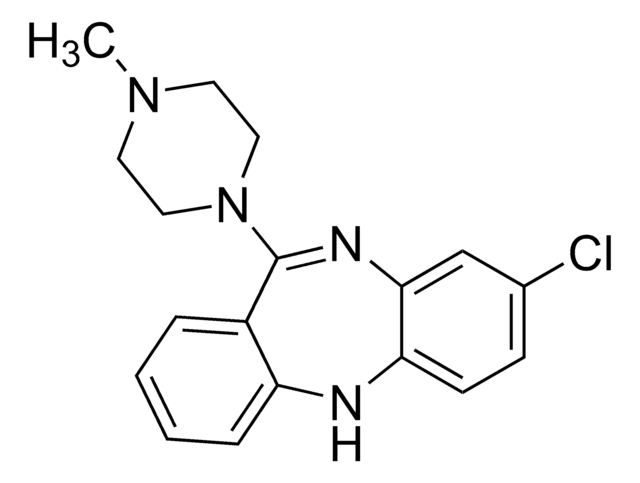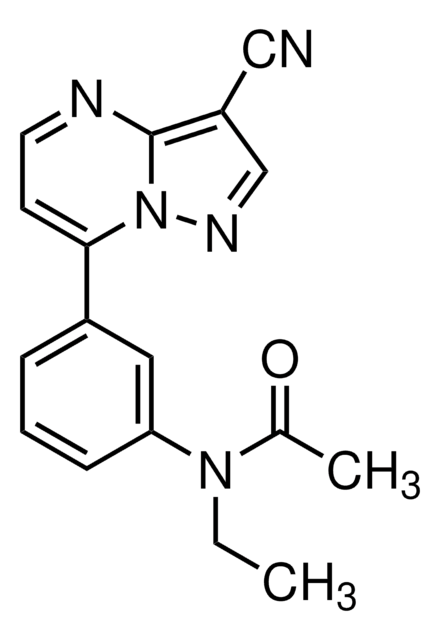1142107
USP
Clozapine
United States Pharmacopeia (USP) Reference Standard
Sinónimos:
8-Chloro-11-(4-methyl-1-piperazinyl)-5H-dibenzo[b,e][1,4]-diazepine
About This Item
Productos recomendados
grado
pharmaceutical primary standard
familia API
clozapine
fabricante / nombre comercial
USP
aplicaciones
pharmaceutical (small molecule)
formato
neat
cadena SMILES
CN1CCN(CC1)C2=Nc3cc(Cl)ccc3Nc4ccccc24
InChI
1S/C18H19ClN4/c1-22-8-10-23(11-9-22)18-14-4-2-3-5-15(14)20-16-7-6-13(19)12-17(16)21-18/h2-7,12,20H,8-11H2,1H3
Clave InChI
QZUDBNBUXVUHMW-UHFFFAOYSA-N
Información sobre el gen
human ... DRD2(1813) , HTR2A(3356)
¿Está buscando productos similares? Visita Guía de comparación de productos
Descripción general
Aplicación
- Clozapine Tablets
Nota de análisis
Otras notas
Producto relacionado
Palabra de señalización
Danger
Frases de peligro
Consejos de prudencia
Clasificaciones de peligro
Acute Tox. 3 Oral
Código de clase de almacenamiento
6.1C - Combustible acute toxic Cat.3 / toxic compounds or compounds which causing chronic effects
Clase de riesgo para el agua (WGK)
WGK 3
Punto de inflamabilidad (°F)
Not applicable
Punto de inflamabilidad (°C)
Not applicable
Certificados de análisis (COA)
Busque Certificados de análisis (COA) introduciendo el número de lote del producto. Los números de lote se encuentran en la etiqueta del producto después de las palabras «Lot» o «Batch»
¿Ya tiene este producto?
Encuentre la documentación para los productos que ha comprado recientemente en la Biblioteca de documentos.
Nuestro equipo de científicos tiene experiencia en todas las áreas de investigación: Ciencias de la vida, Ciencia de los materiales, Síntesis química, Cromatografía, Analítica y muchas otras.
Póngase en contacto con el Servicio técnico






